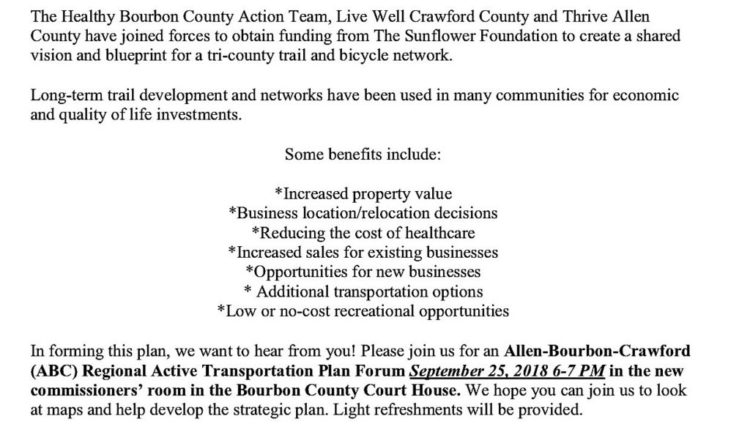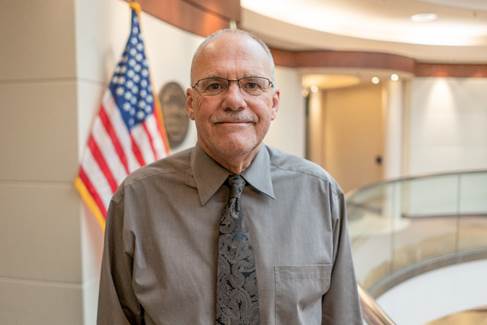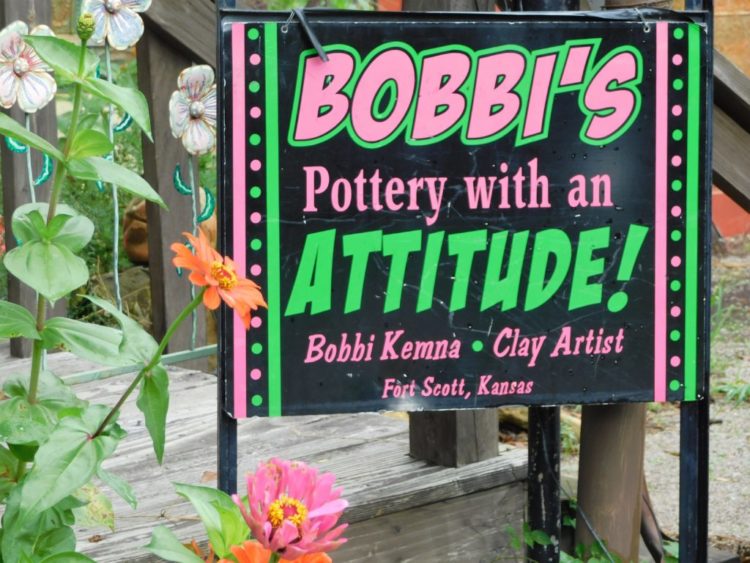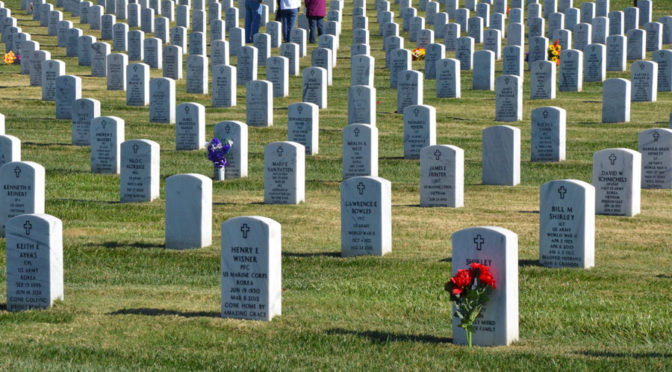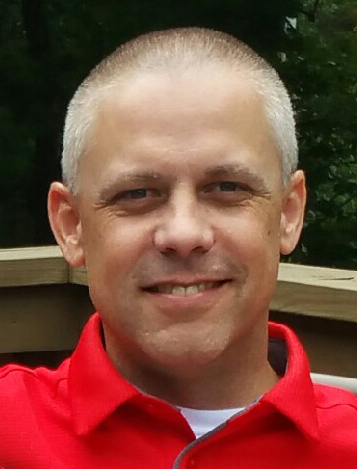Click below for the Fort Scott Police Department daily reports. The FSPD is located at 1604 S. National, Fort Scott, KS 66701 and can be reached at 620-223-1700.
Monthly Archives: September 2018
Public Input Needed Sept. 25 for Trail/Bicycle Network
“The Healthy Bourbon County Action Team is working with our neighbors (Allen and Crawford Counties) to develop a plan for a regional trail system to be presented to each of the county’s governmental entity,” Jody Hoener, Healthy Bourbon County Action Team, said. “There are plans already put in place for US Bicycle Routes (ex. current route 76 and future route 55), unfortunately, each avoiding Bourbon County.”
” This will give our community a chance to make recommendations on connections to existing regional trail networks, highlight local trail networks already in place, and brainstorm new ideas to encourage tourism, enhance the quality of life, and access to outdoor recreation with hiking, trail running, or mountain biking,” she said.
“Either directly or indirectly, these larger trails will be beneficial for all, not just those who value an active lifestyle,” Hoener said.
The Bourbon County Commission Agenda for Sept. 11
Agenda
Bourbon County Commission Room
2nd Floor, County Courthouse
210 S. National Avenue
Fort Scott, KS 66701
Tuesdays starting at 9:00
Date: September 11th, 2018
1st District-Lynne Oharah Minutes: Approved: _______________
2nd District-Jeff Fischer Corrected: _______________
3rd District-Nick Ruhl Adjourned at: _______________
County Clerk-Kendell Mason
9:00-9:45-Jim Harris
9:00-Jeremiah Hill-Roads-245th
10:00-10:15-2019 Budget Hearing
11:00-12:00-Justin Meeks
Executive Session-Privileged in the attorney-client relationship-10 min.
NRP-15 min.
12:00-1:30-Commissioners gone to lunch
1:30-2:00-Justin Meeks
2:00-2:30-Flu Shots
2:30-3:00-Bill Martin
3:00-3:15-Prayer Rally
3:15-David Neville-Flooring
Justifications for Executive Session:
Personnel matters of individual non-elected personnel
Consultation with an attorney for the body or agency which would be deemed privileged in the attorney-client relationship
Matters relating to employer-employee negotiations whether or not in consultation with the representative(s) of the body or agency
Confidential data relating to financial affairs or trade secrets of corporations, partnerships, trusts and individual proprietorships
Preliminary discussions relating to the acquisition of real property
Matters relating to the security of a public body or agency, public building or facility or the information system of a public body or agency, if the discussion of such matters at an open meeting would jeopardize the security of such public body, agency, building, facility or information system
Kansas Anti-Human Trafficking Manager Named
Secretary Meier-Hummel Announces Anti-Human Trafficking Program Manager
Kent Bauman brings wealth of experience to DCF
TOPEKA – Kansas Department for Children and Families (DCF) Secretary Gina Meier-Hummel is pleased to announce Kent Bauman as the Human Trafficking Program Manager. This is a new position created to help coordinate Anti-Human Trafficking efforts across the state.
Prior to serving the agency, Bauman served at the Wichita Police Department, where he had been employed since 1987. Most recently, he was assigned to the Exploited and Missing Children Unit (EMCU). While at the EMCU, he regularly partnered with DCF to investigate cases of missing children, runaways, human trafficking and Commercial Sexual Exploitation of Children (CSEC). Since 2006, Bauman was involved in the investigation of more than 200 CSEC cases, and he was the first investigator to charge and convict a human trafficker in the state of Kansas.
“Kent has extensive knowledge about human trafficking and we are excited and grateful to have him at the agency,” said Secretary Meier-Hummel. “We purposefully created this position because we wanted to strengthen DCF’s approach to preventing human trafficking, and I believe Kent’s impressive background will serve him well as he leads DCF anti-human trafficking efforts across the state.”
In addition to serving as the Human Trafficking Program Manager, Bauman will also dually serve as the DCF Law Enforcement liaison, to help improve communication and collaboration between the agency and local law enforcement.
Bauman has a bachelor’s degree in Education from Southwest Baptist University.
“I look forward to working with law enforcement, local community partners and other state agencies to help improve DCF Anti-Human Trafficking efforts in Kansas,” said Bauman. “Trafficking survivors are some of our most vulnerable Kansans, and I am humbled to serve them in this new capacity at DCF. Secretary Meier-Hummel has made preventing human trafficking one of her top priorities, and I am excited to work alongside her in this effort.”
DCF partners with local law enforcement and other state agencies to address human trafficking in Kansas. DCF is statutorily required to conduct an initial assessment of children/youth whom law enforcement reasonably believes are victims of human trafficking to determine “safety, appropriate and timely placement and appropriate services to meet the immediate needs of the child.”
If you believe you are a victim of human trafficking or may have information about a possible trafficking situation:
- Call 911 if there is risk of immediate harm
- Contact the National Human Trafficking hotline: 1-888-373-7888 Or text “befree” at (233733)
- If the possible human trafficking victim is a minor, also call the Kansas Protection Report Center (KPRC) at 1-800-922-5330.
Kansas’ Own Little Jerusalem Badlands Park
America’s State Parks Directors Honor The Nature Conservancy of Kansas
TOPEKA – The National Association of State Park Directors (NASPD) recently honored The Nature Conservancy of Kansas (TNC) with its 2018 President’s Award.
In 2016, TNC bought a 330-acre tract of land in Logan County that encompasses 250 acres of Niobrara chalk formations. The property adjoins the Smoky Valley Ranch which is owned by TNC.
In 2018, the Kansas Legislature formally designated the chalk formations as Little Jerusalem Badlands State Park. The park is projected to be opened by summer 2019.
The Kansas Department of Wildlife, Parks and Tourism (KDWPT) and TNC are collaborating to design access to the park and build trails to protect the fragile formations and unique ecology of the area.
The Niobrara chalk formation is a layer of rock deposited about 85 million years ago. It is composed of a chalk-like sediment that settled at the bottom of an inland ocean called the Western Interior Seaway which covered most of central North America roughly 140 to 70 million years ago. The rock was exposed and eroded over time, creating the tall pillars and rugged canyons that characterize the Little Jerusalem badlands.
In addition to breathtaking views, Little Jerusalem is also home to wildlife – from bats and ferruginous hawks to snakes, toads and lizards – and plants found nowhere else in the world.
“Without the help of the Conservancy staff, Kansas would not have this beautiful landscape as a part of its state park system,” said Linda Lanterman, NASPD president and Kansas state parks director. “TNC and KDWPT are committed to making this property accessible to visitors, while ensuring that the fragile terrain is protected.”
Prominent members of The Nature Conservancy of Kansas who have worked especially diligently to protect and make the Little Jerusalem badlands accessible include Rob Manes, Kris Knight and Matt Bain.
Life Expectancy Estimates Available by Neighborhood in Kansas
Census Tract-Level Data can help leaders, advocates, residents create healthier communities
TOPEKA – The Kansas Department of Health and Environment’s (KDHE) Office of Vital Statistics, Bureau of Epidemiology and Public Health Informatics, has partnered with the National Center for Health Statistics (NCHS) to produce life expectancy estimates in each census tract in the United States. Six years of data was used, through 2015, for the calculations of this indicator. Kansas-specific geographic health statistics.
“These census tract-level life expectancy estimates—based on state death records and population estimates from the U.S. Bureau of the Census—have previously been unavailable nationwide,” said Lou Saadi, Ph.D., State Registrar and Director of the KDHE Bureau of Epidemiology and Public Health Informatics. “Access to estimates like these helps public health experts quantify how people living just a few miles apart can have vastly different opportunities for a long life. With this kind of information, community leaders can examine the factors that may be influencing differences in longevity—such as access to health care, safe and affordable housing, educational opportunities and other factors that impact the health of community members—and target solutions more effectively.”
In Kansas, the dataset includes “life expectancy at birth” estimates for 723 Kansas Census Tracts. Life expectancy at birth ranges from 62.5 years in Census Tract 041800 (in Wyandotte County) to 89.7 years in Census Tract 962600 (in Gray County).
Although county-, city-, and ZIP code-level data have provided similar information, they often don’t tell the full story as neighborhoods right next to each other—located within the same ZIP code, city or county—can provide drastically different opportunities for health and well-being. Census tract-level data offer information on a much smaller and targeted group of people making it easier to create a more complete picture of health at a local level. Census tracts cover an average of 4,000 people who typically have similar characteristics, such as social and economic status. Data available at this very granular level can help to more effectively target efforts to remove the barriers standing in the way of health and opportunity.
Hospitals, for example, can use the data to help create community health assessment plans that will identify areas most in need. Community development financial institutions can use these data to help decide which neighborhoods most need their investment dollars to fund health clinics, schools and other projects. Community members can use the data to guide conversations about what is causing life expectancy disparities in their neighborhood and what changes they want to address those challenges, such as better public transportation, access to healthy food or job training opportunities.
For more information on the United States Small-Area Life Expectancy Project (USALEEP) and to access life expectancy estimates for your neighborhood, please visit www.naphsis.org/usaleep and http://kic.kdheks.gov/LifeExptncy.html#top.The County Health Rankings’ What Works for Health is a searchable tool that provides evidence-informed policies, programs, systems and environmental changes that can make a difference locally. CDC’s Division of Community Health website also provides examples of communities taking action to improve the health of their residents.
Something New: Art In The Yard Sept. 15
Local artist Bobbi Kemna has created something new.
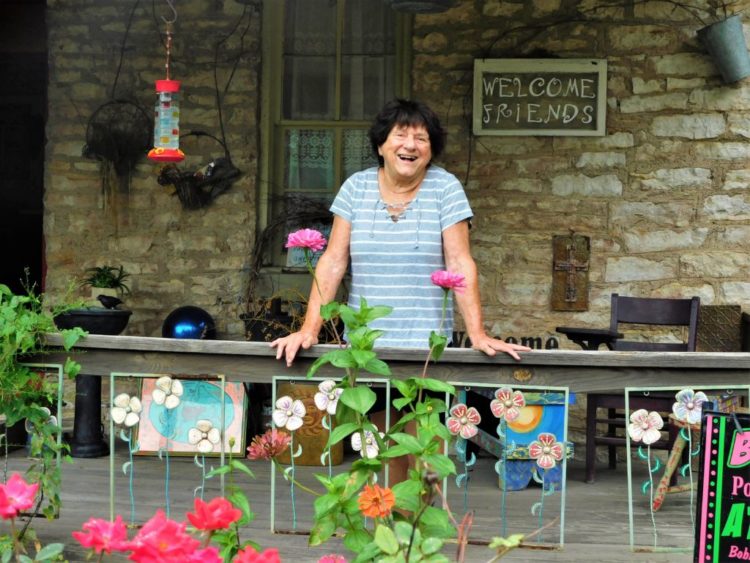
Turning from pottery, for which she is locally known, Bobbi Kemna has been working for several months to create a one-day festival event for artists to display and sell their wares.
The day will be full of art of all kinds: pottery, fabric, paintings, metal, jewelry, furniture, music, theater, and food.
“This is for artists and art enthusiasts,” Kemna said.
She is hosting the event called Art In The Yard 2018 at her home on Saturday, September 15 from 10 a.m. to 6 p.m.
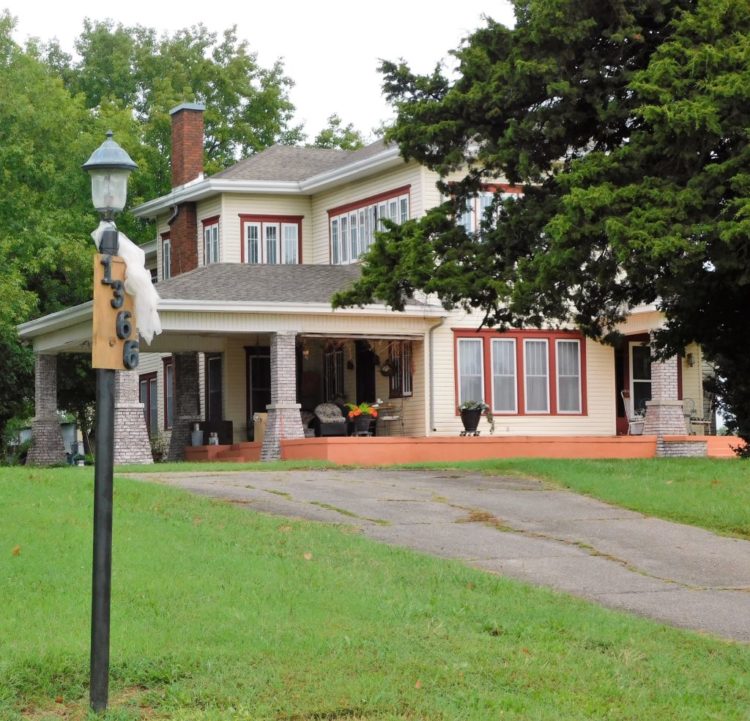
Kemna lives at 1366 215th Street, which is north of Hwy. 54, just west of the Hwy. 69-54 junction.
There will be a free trolley ride to pick up attendees at the Boiler Room Brewhaus parking lot, 10 S. National, starting at 10 a.m.
Additionally, there will be a designated vehicle parking just north of the festival site.
The event will feature artists from the area and also Wichita, Kansas City, and Joplin, MO, Kemna said.
“It will be a fun day with artful stuff to purchase,” Kemna said. “No fee is charged to come.”
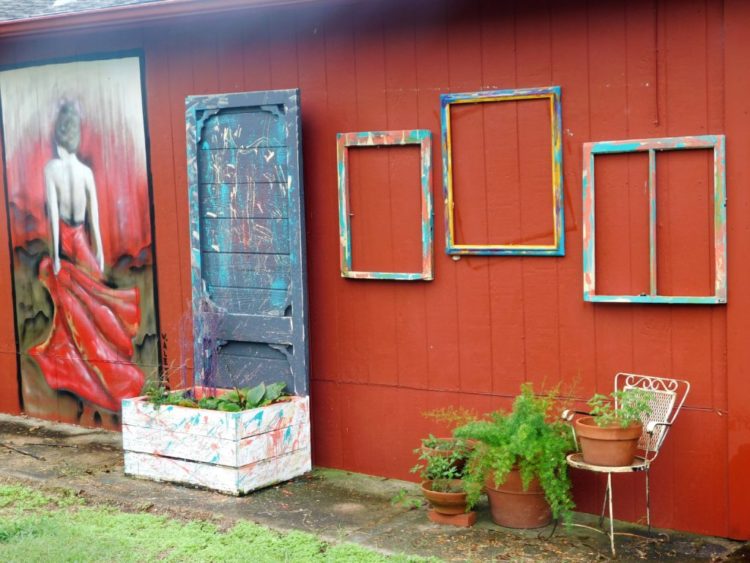
“I’m excited about it,” she said. “I want it to be a launching pad for artists. Some don’t know how to market.”
About 25 artists have said they will be there with metal, fabric, wood, pottery, jewelry, furniture, music art as well as food vendors.
“The musicians will be playing for tips, please be generous,” Kemna said.
BBQ food, homemade cookies and cupcakes, and soft drinks will be sold.
Local artists Barbara Ritter, Mary Eastwood, Paul Milks, Barbara Gibson, Lucy Gladbach, Jean Strader, David and Barb McCord, Diana Stoughton, Tonya Miller, Jeff Tinsley, Nick McGee, Susan Porter, Danny Hereford, Jeremy Rider,Jeremiah Richards, Patrick Kerr, Betsy Reichard, Dylan Renfro and Dee Davis will show and sell their artwork.
Friends and family are giving their support and helping out during the festival, she said.
Fort Scott High School theater teacher Angie Bin and her thespian students will perform and sell drinks as a fundraiser for the group.
Musicians will be playing in different spots in the yard.
Carsen Felt, director of the Fort Scott High School orchestra will be bringing 30 students to perform.
Students from St. Martin’s Academy will perform.
“One plays the bagpipe,” Kemna said.
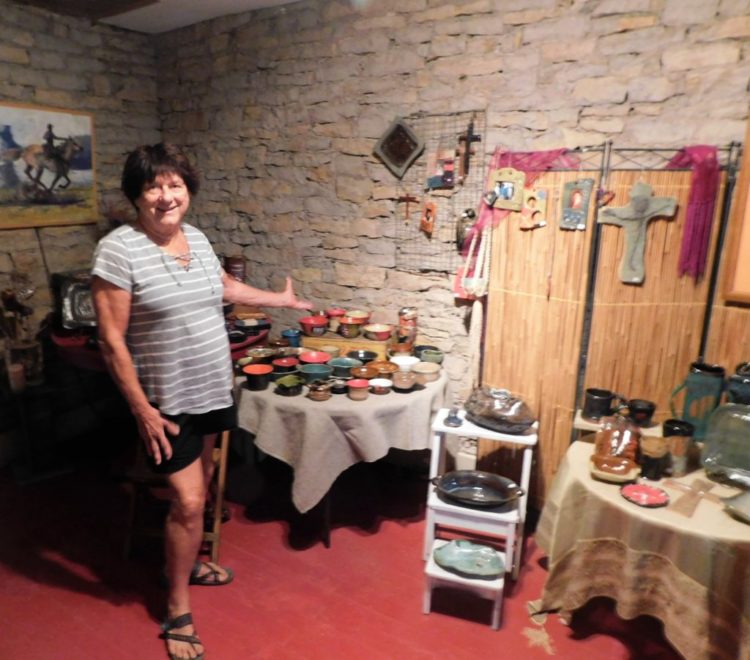
For Kemna, the festival is a fulfillment of a vision she had when she moved into the 1895 circa property called “Anatomy Hill, 20 years ago, with her husband, Harry.
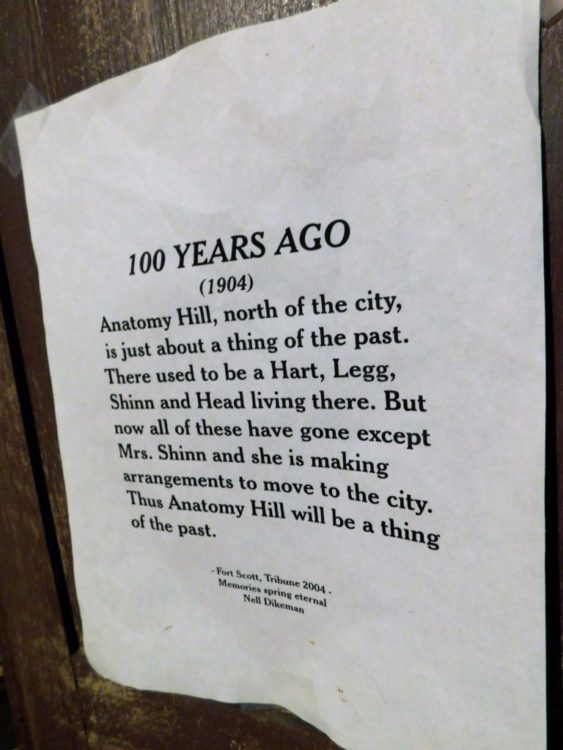
It is a vision she shared with her husband, now deceased.
“Of tents, arts and people, the whole yard full,” Kemna said. “It’s been 20 years to get here.”
For more information about some of the artists, look on Kemna’s Facebook page: Art in the Yard 2018.
Kemna can be reached at 620-223-4583 or [email protected]
Kemna wants to acknowledge Sammie Emery’s part in encouraging her as an artist, she said.
Emery had a pottery class that Kemna attended. At first, Kemna didn’t think pottery was for her.
But with Emery’s encouragement, she kept attending the class, until one day Kemna found “Clay had wrapped itself around my heart.”
Obituary of Danny Ernest Hall
Daniel Ernest Hall, age 45 of Fort Scott, Kansas passed away on Saturday, September 8, 2018, at Mercy Hospital, following a battle with cancer.
Danny was born in Fort Scott on April 29, 1973, to Ernest Hall and Patricia Goltra Hall. He married Amanda Cowen on November 30, 2002, at Community Christian Church in Fort Scott.
He graduated from Bolivar High School in 1991 then received a Bachelor of Science degree in biology and education from Pittsburg State University. He began teaching biology and coaching in Bolivar in 1995. He then taught and coached 4 years in Frontenac High School. Danny thoroughly enjoyed coaching football.
Leaving education, he pursued his first dream in the medical field. Danny began as an EMT for the Linn County Ambulance Service. Danny received his paramedic licensure from Johnson County Community College. In 2015, He was awarded the White Stars of Life from the American Ambulance Association in Washington D.C. for ambulance professionals who have gone above and beyond the call of duty in service to their community. Danny most recently served as the EMS manager for Mercy Hospital of Fort Scott.
Danny was an active member of Community Christian Church where he attended for 16 years.
His hobbies were deer and turkey hunting, carpentry, golfing, target shooting, archery, KU basketball, and watching the Kansas City Royals and Chiefs.
Danny enjoyed spending time with family and friends during special holidays and events. Christmas was Danny’s favorite holiday.
Surviving are his wife, Amanda, and two sons, Cole and Caleb, five sisters Denise Patton (John) of Osage Beach, Missouri; Christie Hilton (John) of Manassas, Virginia; Stephanie Myers (Jake) of Morrisville, Missouri; Laura Hall of Bolivar, Missouri; Erin Hall of Springfield, Missouri.
Preceding him in death were his mother, Patricia Goltra Hall, and his father, Ernest (Ernie) Hall, grandparents Robert J. Goltra Sr., Ernest Bernard and Eileen J. Hall.
Rev. Dusty Drake and Rev. Mike Armstrong will conduct funeral services at 10:00 AM Thursday, September 13th, at the Community Christian Church, 1919 S. Horton, Fort Scott
. Burial will follow in the Evergreen Cemetery, Fort Scott.
The family will receive friends from 5:00 until 7:00 PM Wednesday evening at the Cheney Witt Chapel.
Memorials are suggested to the Cole and Caleb Scholarship Fund and may be left in the care of the Cheney Witt Chapel, PO Box 347, 201 S. Main, Fort Scott, KS 66701. Words of remembrance may be submitted to the online guestbook at cheneywitt.com.
Overseed Now To Improve Lawn Quality
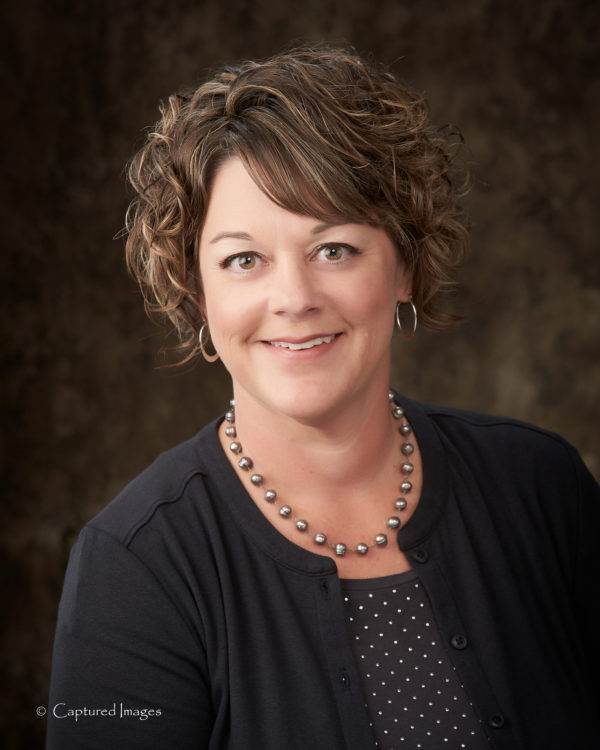
Did you have unsightly bare spots in your lawn this year? If so, you may want to consider renovating your lawn. Renovating doesn’t have to be done by plowing under the current turf and starting from scratch. Instead, lawns can be thickened up by overseeding during September.
To start the overseeding process, mow the grass short (1-1.5 inches) and remove the clippings. This will make it easier to get good seed-soil contact and increase the amount of light that will reach the young seedlings. The success of overseeding is dependant on good seed-soil contact. Thatch can prevent the seed from reaching the soil and germinating. If the thatch layer is ¾ inch or more, use a sod cutter to remove it. A power rake can also be used to reduce a thatch layer.
Next, the soil should be prepared for the seed. Holes must be made into the soil for the seeds to fall into. A verticut machine can be used. It has solid vertical blades that can be set to cut furrows into the soil. Another option is to use a core aerator. This machine will punch holes into the soil and deposit the cores on the surface of the ground. Each hole will produce an excellent environment for seed germination and growth.
Fertilizer should then be applied at the rate suggested by a soil test or a starter fertilizer should be used at the rate suggested on the bag.
Seeding is the next step. For overseeding, use half the amount needed compared to seeding bare ground. For tall fescue, the normal rate for bare seeding is 6 to 8 pounds per 1000 square feet so the overseeding rate would be 3 to 4 pounds per 1000 square feet. You don’t necessarily have to overseed with the same variety you planted before. The quality of a lawn by can be raised by overseeding with a fescue with better characteristics. Many stores carry blends of several newer high-quality tall fescues.
Finally, water everything in and then keep the seedbed constantly moist to ensure rapid germination. Frequent light waterings are better than deeper, infrequent watering as the seedlings become established.
Fertilize with a high nitrogen fertilizer again 4 to 6 weeks after seeding to keep plants growing well and to build up food reserves.
On a side note, many homeowners often want to overseed bare spots under trees but have minimal luck. The turf will sprout as fall progresses and will get well established by winter. It continues to look good going into spring. However, the next summer it begins to die out again – despite any care it is given.
In many cases, this is due to too much shade or the type of turf planted isn’t a good fit for the location. Tall fescue is the only widely used lawn turf in Kansas that can survive some shade. All other cool and warm season turfs need more sunlight.
Instead of establishing grass under trees, consider underplanting the tree with shade tolerant ornamental plants. Examples include ground covers such as vinca minor vines, Boston ivy or liriope, or plants such as hostas or hardy ferns.
K-State Research and Extension is an equal opportunity provider and employer.
Photos From the FSHS Volleyball Games Sept. 4 by Brian Wade
The Fort Scott Tigers Volleyball Team played Anderson County and Nevada, Mo. on September 4.
The Bourbon County Sheriff’s Office Daily Reports Sept. 10
The Fort Scott Police Department’s Daily Reports Sept. 6-9
Click below for the Fort Scott Police Department daily reports.
The FSPD is located at 1604 S. National, Fort Scott, KS 66701and can be reached at 620-223-1700.
